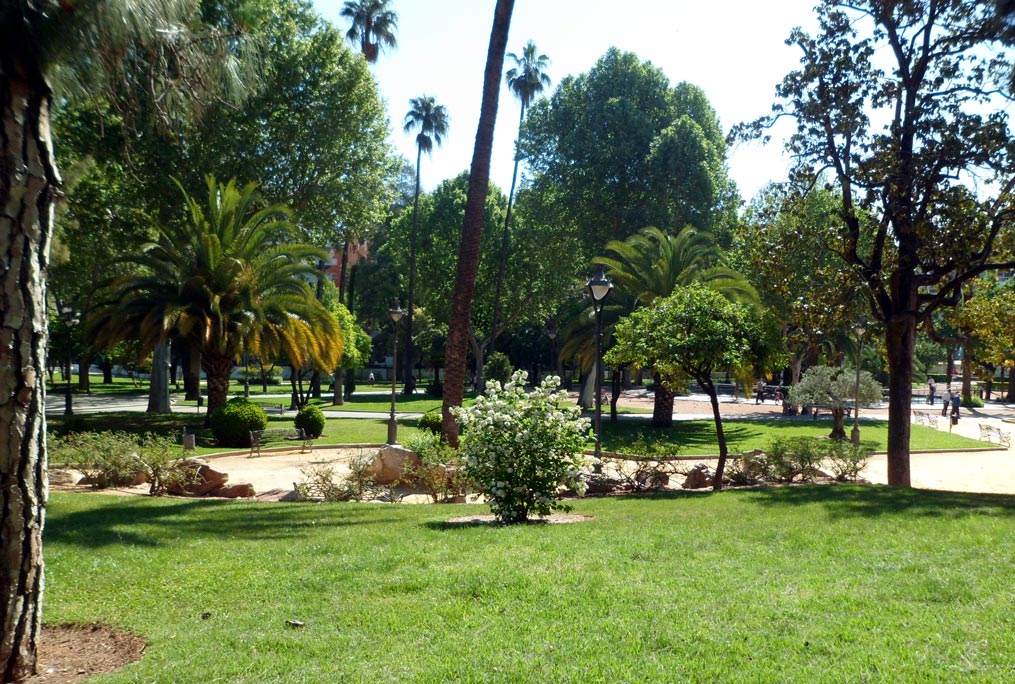Córdoba is the capital of the province to which it gives its name. It is located at the foot of Sierra Morena and is caressed in its limits by the Guadalquivir river. Officially founded in the year 169 a.C. by the Roman soldier Claudio Marcelo, The long history of Córdoba is marked by having been the capital of the Caliphate of al-Andalus during the 10th century. This makes the city the depository of one of the best samples of Andalusian caliphate art. Nevertheless, Córdoba also hides beautiful Christian churches built on old mosques.
- Calahorra Tower
Direction: Calahorra Tower. Roman Bridge s / n
Schedule: of 1 May to 30 September, of 10 a 14 and of 16.30 a 20.30 h. Of 1 from October to 30 April, of 10 a 18 h.
Phone: 957 29 39 29 - Living Museum of al-Andalus
Direction: Calahorra Tower. Roman Bridge s / n
Schedule: of 1 May to 30 September, of 10 a 14 and of 16.30 a 20.30 h. Of 1 from October to 30 April, of 10 a 18 h.
Phone: 957 29 39 29 - Roman bridge
- Arch of Triumph
Direction: Ronda de Isasa, 512, 14003 Córdoba - Cordoba Cathedral Mosque
Direction: Cardenal Herrero Street, 1, 14003 Córdoba
Schedule:
November to February: Monday to Saturday from 10:00 a 18:00 h, Sunday of 8:30 a 11:30 h and from 15:00 a 18:00 h
March – April: Monday to Saturday from 10:00 a 19:00 h, Sunday of 8:30 a 11:30 h and from 15:00 a 19:00 h
Phone: 957 47 05 12 - Bell tower
Direction: Cardenal Herrero Street, 1, 14003 Córdoba
Schedule: Monday to Sunday from 9:30 a 14:30 h - Handkerchief alley
- Calleja de las Flores
- Alcazar of the Christian Monarchs
Direction: Campo Santo of the Martyrs Square, s/n, 14004 Córdoba
Schedule: Tuesday to Friday from 8:30 a 20:45 h; Saturday of 8:30 a 16:30 h; Sunday and holidays of 8:30 a 14:30 h
Phone: 957 42 01 51
A good option for those who come to the city by car is to park in the southern area and head towards the Roman Bridge with the intention of crossing it on foot..
There, at one end, they will find the Calahorra Tower (1), a defensive fortress of Islamic origin conceived as an entrance to the city. Its interior houses the Al-Andalus living museum (2), which preserves remnants of the caliphate culture: characters, daily life, wisdom, science, architecture, music ... also, they can climb to the top to enjoy the views of the city.
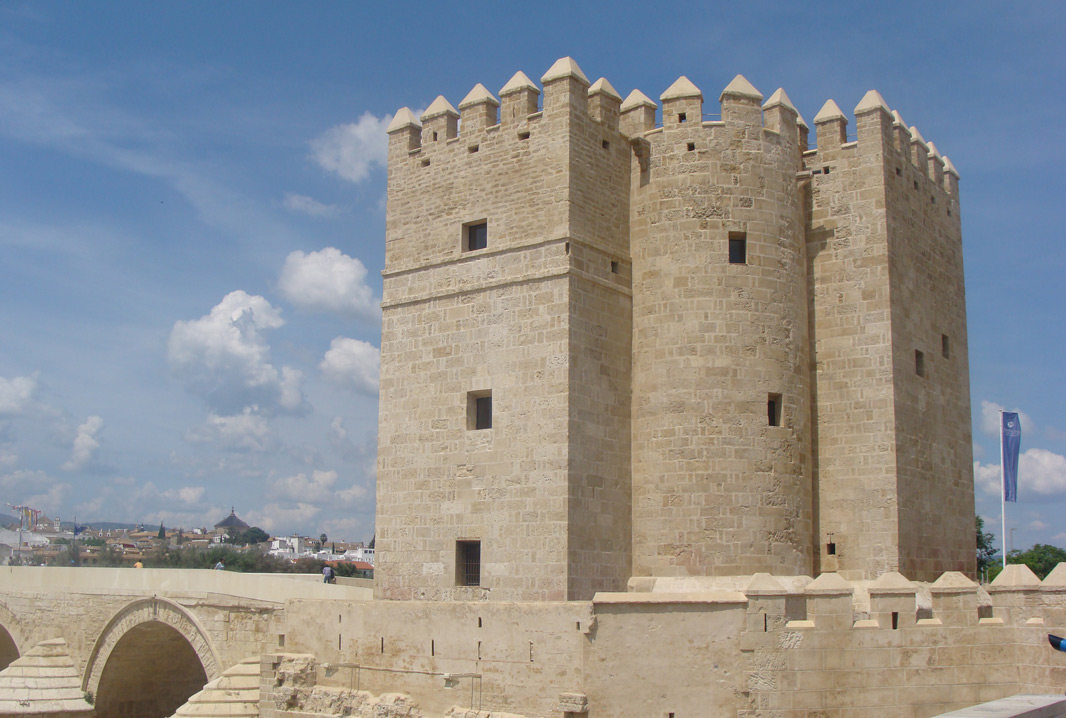
After touring the Roman bridge (3) and admire the image of passing under the Arch of Triumph (4), visitors will arrive at the Mosque-Cathedral of Córdoba (5), monument declared as a World Heritage Site. This represents the most important historical complex of the city of Córdoba and, together with the Alhambra in Granada, of all Andalusian architecture. The best option to access at any time is to have the tickets already purchased, Although these can be purchased at the moment of arrival through the lockers or the automatic machines next to the door.
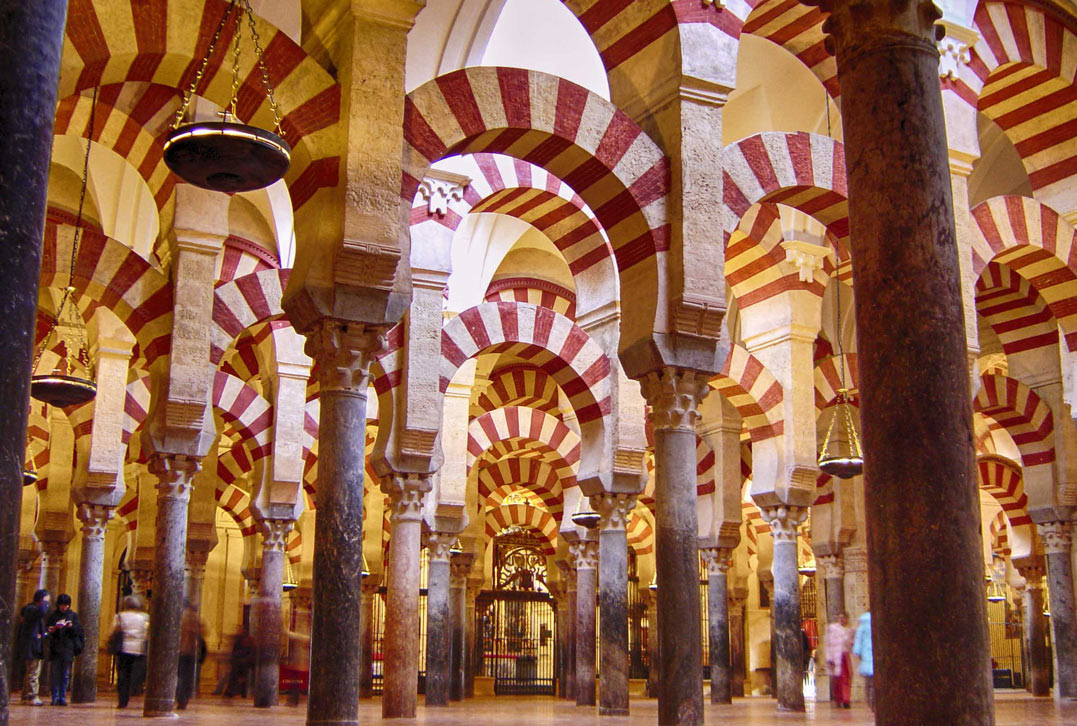
In addition to enjoying the architecture of this unique place, it is possible to go up to the bell tower (6), next to the Door of Forgiveness, to enjoy beautiful views of the city of Cordoba. This tour requires the acquisition of a specific ticket, and authorizes the ascent of the three sections of three hundred steps that will complete the visit to the best-known wonder of Córdoba ... although by no means the only one.
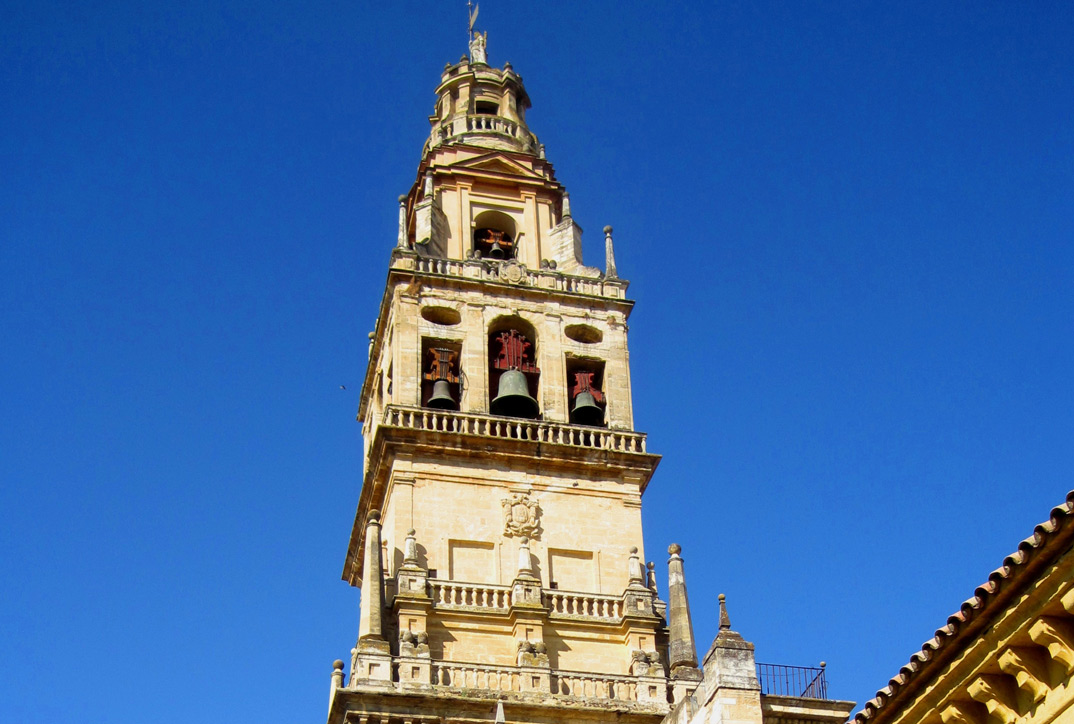
Next to the Mosque, near the Santos tavern, travelers will find what is considered the narrowest street in the capital of Córdoba, a dead end passage known as the handkerchief alley (7). Its official name is Calle de Pedro Jiménez, and it is one of the most touristy routes in the city of Córdoba. It gets its name from the length of the ancient handkerchiefs that the gentlemen wore on the lapels of their suits., since this exactly coincided with the width of the street. At the end of it there is a square, home to a fountain made of fired clay that used to be decorated with tiles and that overlooks a well of Arab origin.

Surrounding the Mosque a little more, tourists will reach one of the most beautiful streets in Spain, the Calleja de las Flores (8), a passage similar to the one previously described that leads to a square that was an old neighborhood patio.
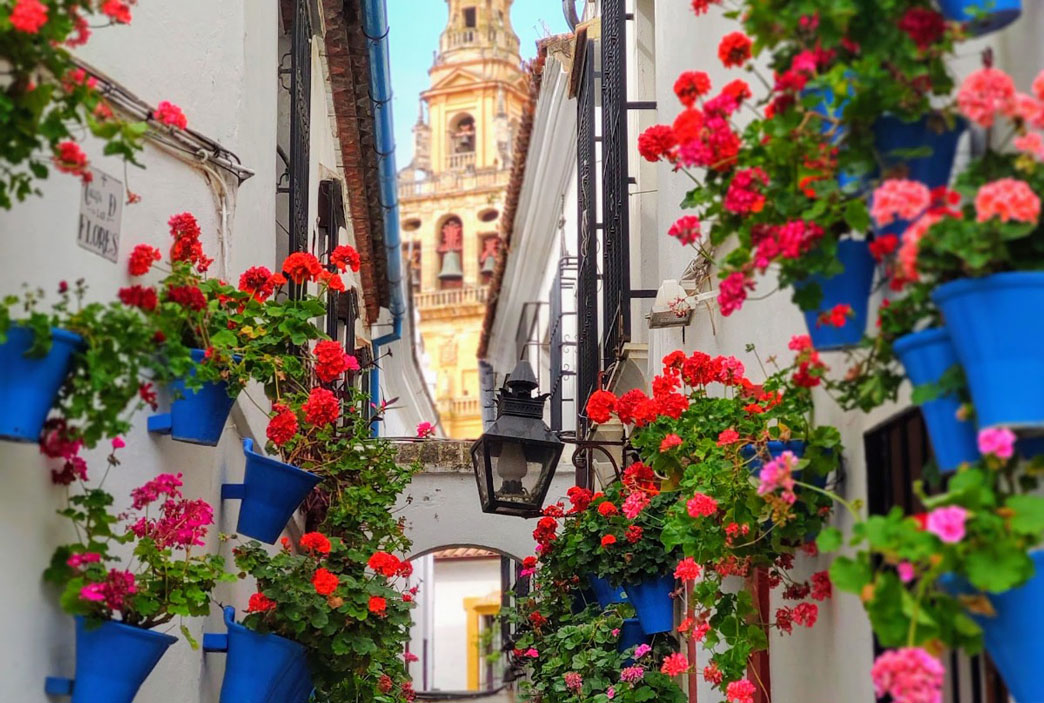
If they retrace their steps, travelers will be able to approach until the Alcazar of the Christian Monarchs (9), where they can get lost for hours. This military building on the banks of the Guadalquivir river contains a large part of the architectural evolution of Córdoba: ramparts, sources, gardens, Roman mosaics in tesserae and more archaeological remains. Your tour can be done both day and night: It is highly recommended for its visitors to enjoy the light and water show that takes place from 20:30 hours.
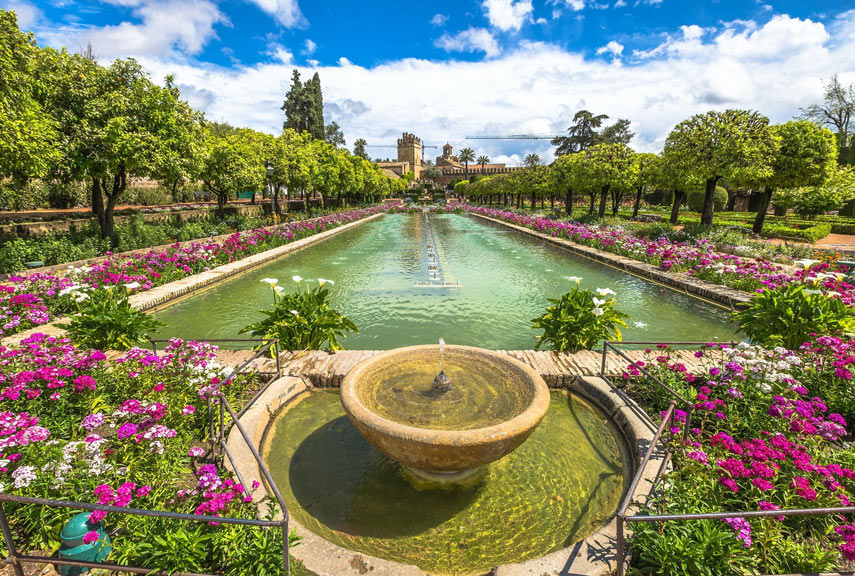
- Seville gate
Direction: Puerta Sevilla Street, 14004 Córdoba - Almodóvar gate
Direction: Jews Street, 2, 14003 Córdoba - San Basilio neighborhood
- Royal Stables of Córdoba
Direction: Royal Stables Street, 1, 14004 Córdoba
Schedule: Monday of 10:00 a 13:30 h, from Tuesday to Saturday from 10:00 a 13:00 h and from 16:30 a 19:30 h, Sundays and holidays of 10:00 a 13:30 h.
Phone: 671 94 95 14 - Jewry
- Statue of the philosopher Averroes
Direction: Cairuán Street, 14004 Córdoba - Plaza Maimónides
- Plaza Tiberiades
- Synagogue of Córdoba
Direction: Jews Street, 20, 14004 Córdoba
Schedule: Tuesday to Saturday from 9:00 a 21:00 h and Sundays of 9:00 a 15:00 h
Phone: 957 01 53 34
The second day can start with a beautiful tour between the Seville gate (1) and the Almodóvar gate (2), one of the most charming areas of the city. Later, tourists can come up to the San Basilio neighborhood (3), also known as the Alcázar Viejo neighborhood. It is a neighborhood known for its Cordovan patios, that are open most of the year, beyond the Festivity of the Cordovan Patios. This area is fortified with some structures such as the Torre de Belén, Almohad period.
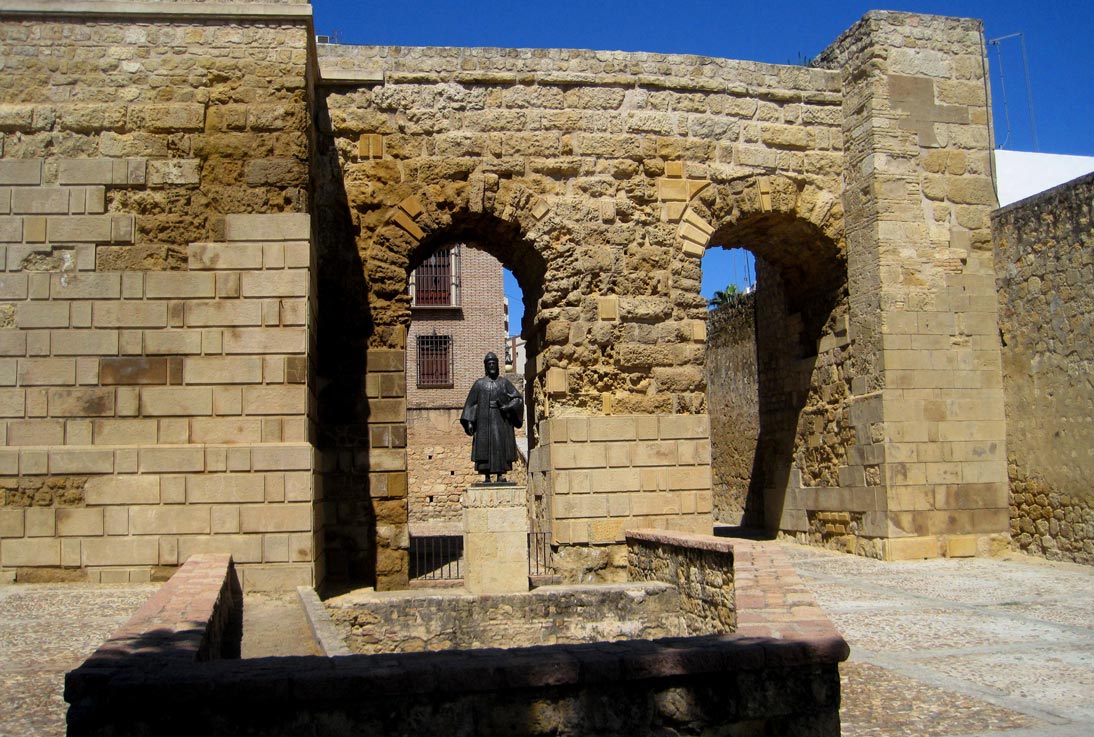
There are several monuments that can be visited in this area of the city. One of them are Royal Stables of Córdoba (4), a set built in the 16th century by order of Felipe II with the aim of raising purebred Spanish horses.
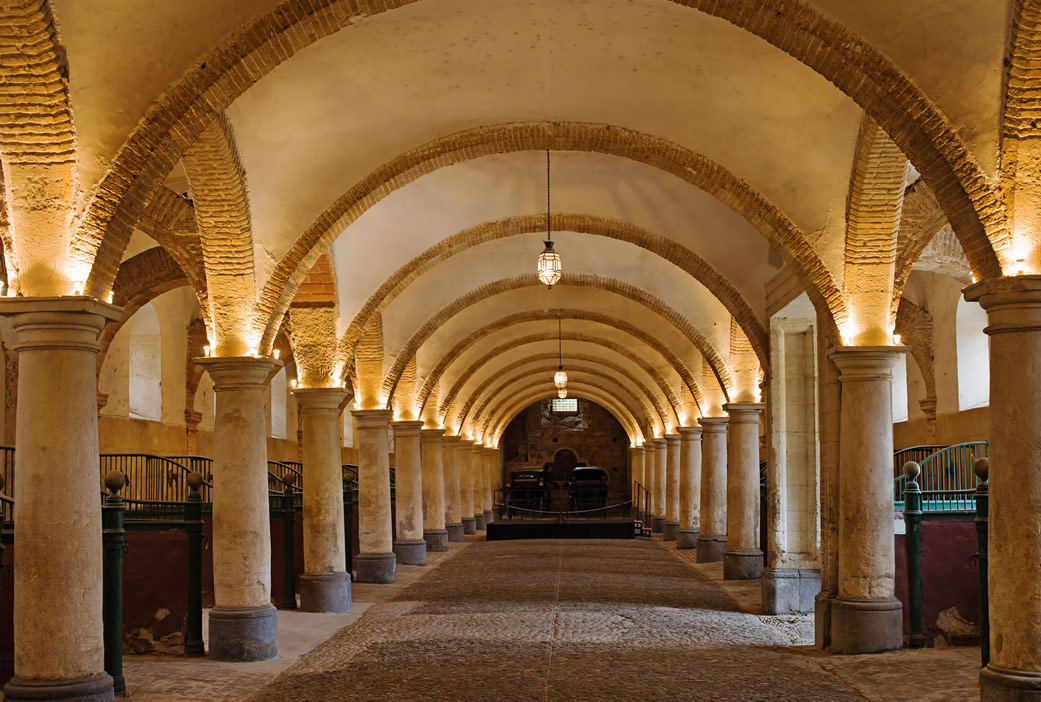
After walking through the alleys of the Alcázar Viejo, Visitors will be able to visit the neighborhood of the Jewry (5), which can be accessed from Calleja La Luna, close to where is the statue of the philosopher Averroes (6). The goal is to get to the Synagogue, going through the Plaza Maimónides (7) and for the Plaza Tiberiades (8), where is the sculpture of Maimonides.
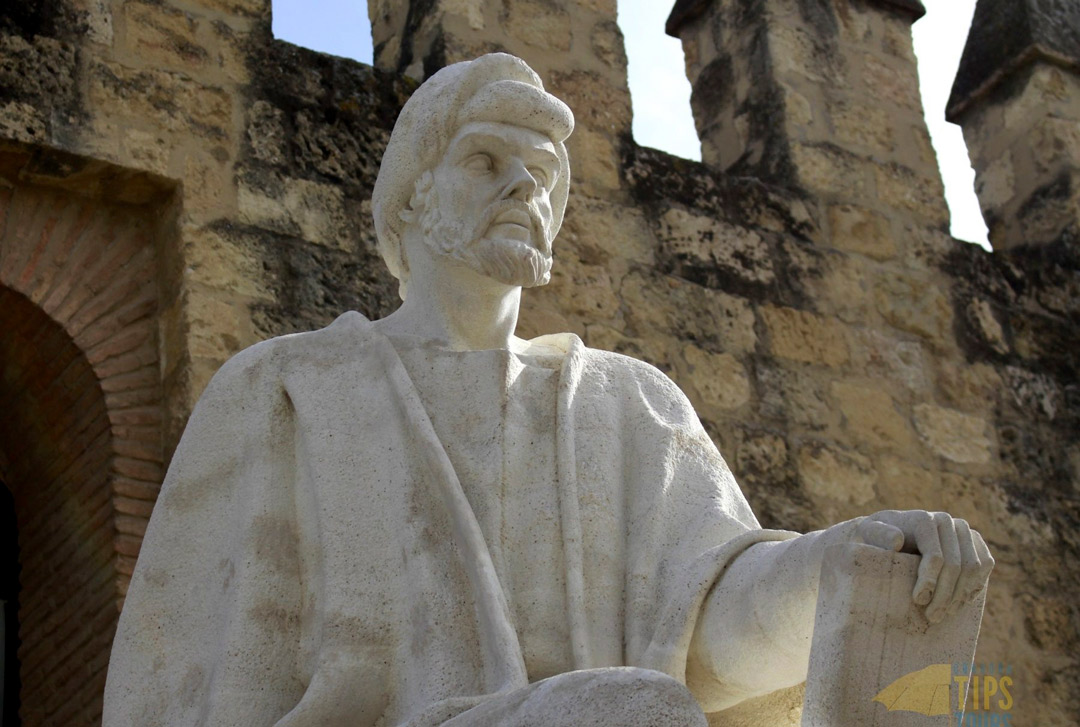
The Synagogue of Córdoba (9) It is the only existing one in Andalusia and one of the only three in the Mudejar style that are preserved in Spain.. It consists of a patio that is accessed from the street and that leads to a hall followed by the prayer room. From the eastern side of the lobby starts the staircase that leads to the gallery for women; said gallery is connected to the prayer room by three balconies decorated with multi-lobed arches. Plaster decoration, with Mudejar motifs, has been lost up to about two meters high, leaving the brick of your factory in sight.
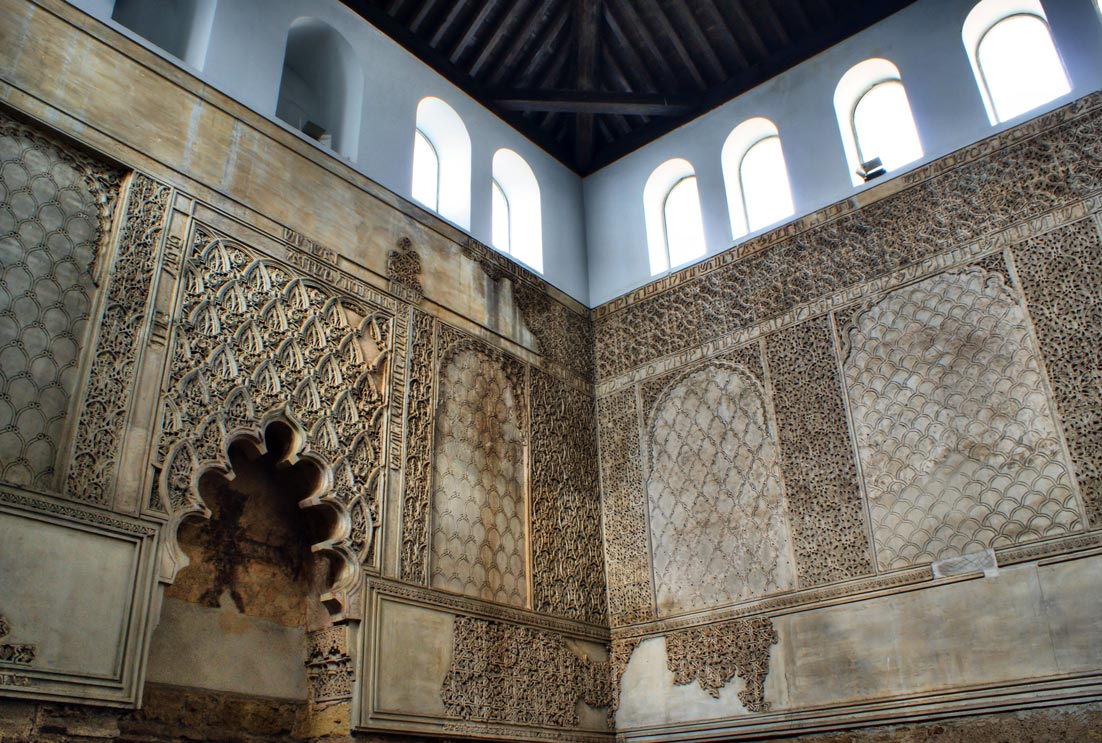
- Tendillas Square
- Cruz Conde Street
- Claudio Marcelo Street
- Calle Gondomar
- Roman temple of Córdoba
Direction: Capitulares Street, 1, 14002 Córdoba - Viana Palace
Direction: Don Gome Square, 2, 14001 Córdoba
Schedule: from Tuesday to Sunday from 9:00 a 15:00 h
Phone: 957 49 67 41
After visiting the Jewish Quarter, On the third day, travelers will experience a total change of scenery upon reaching the Tendillas Square (1), in the vicinity of the ancient Roman forum, where the tourist information point is located. This area of the city is currently the axis on which the commercial life of the Cordovan capital is developed and it serves as a connector for the main avenues, as are the streets Cruz Conde (2), Claudio Marcelo (3) Y Gondomar (4).

In this part, travelers will find the roman temple of Córdoba (5), some ruins discovered during the expansion works of the Town Hall. It is a pseudoperipteral architectural formation, hexastyle and Corinthian order, of 32 meters long by 16 Wide.
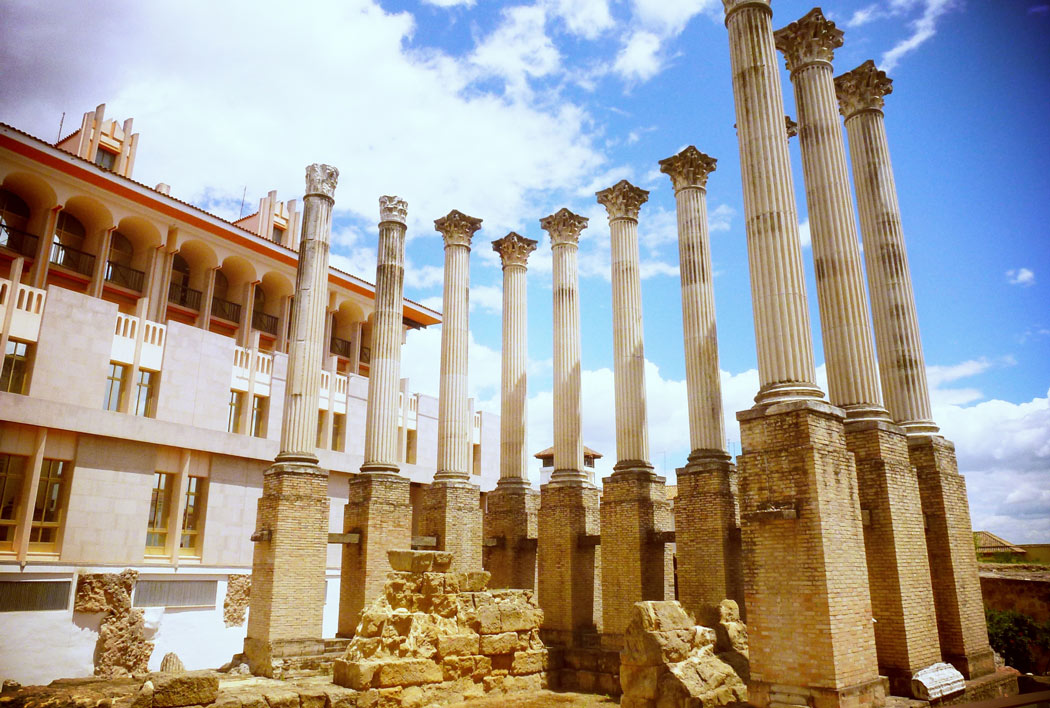
After having explored that area and having visited the shops and businesses that adorn it, tourists will be able to head towards the northern part of the historic center of Cordoba. It seems obligatory to recommend a visit to the Palace of the Counts of Viana (6), not without first advising that it is closed on Mondays. You can reserve the entrance to visit the patios on your own, what is the most remarkable thing about the building, or for the full visit, adding the guide inside the palace.

- Royal Conventual Church of San Agustín
Direction: San Agustín Square, s/n, 14001 Córdoba
Schedule: from Tuesday to Sunday from 9:00 a 15:00 h
Phone: 957 48 46 25 - Church of the Juramento de San Rafael
Direction: San Rafael Square, 8, 14001 Córdoba
Schedule: Monday of 10:00 a 13:30 h, Tuesday to Sunday from 10:00 a 13:30 h and from 18:00 a 21:00 h - Church of San Lorenzo
Direction: San Lorenzo Square, 7, 41002 Córdoba
Schedule: Tuesday to Thursday from 9:30 a 11:30 h, Friday of 9:30 a 12:30 h, Sunday of 11:00 a 12:45 h
Phone: 954 38 69 56 - Church of Santa Marina
Direction: Plaza de Sta. Marina
Schedule: open of 19:00 a 21:00 h. Sundays of 11:00 a 13:00 h
Phone: 954 90 02 35
On the fourth day, visitors to the city will depart from the vicinity of the Viana Palace to take a route through the most notable churches in the area..
A) Yes, the first stop will be Royal Conventual Church of San Agustín (1), located in the square of the same name, a building that began to be built during the fourteenth century and whose current appearance corresponds to the first third of the seventeenth century. This church suffered significant deterioration during the 19th century, during the French invasion, being later restored on various occasions.
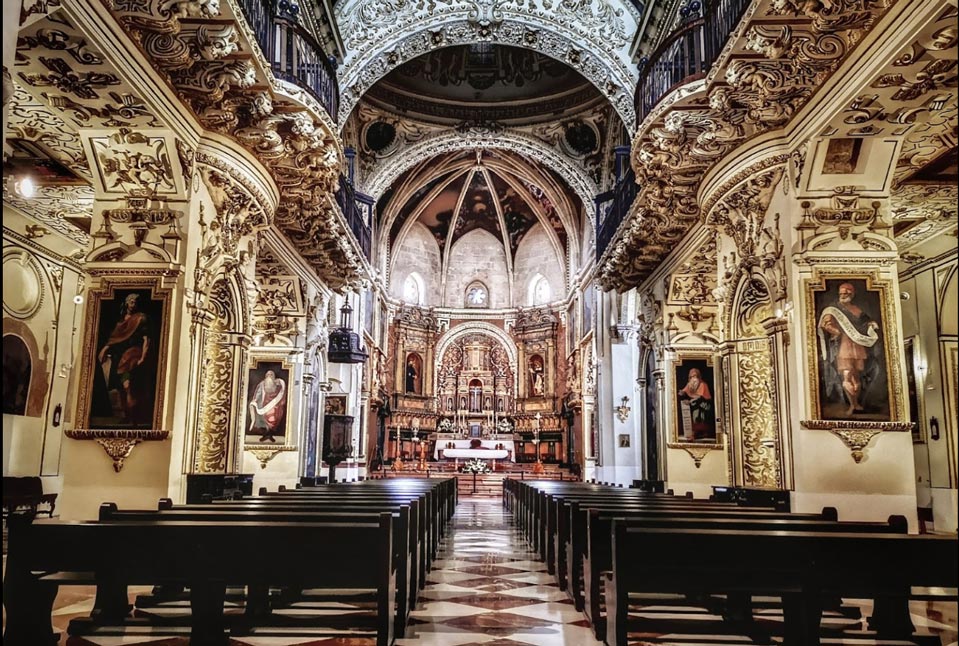
Strolling in a southeast direction, tourists will find the Church of the Juramento de San Rafael (2), a catholic temple that holds the rank of minor basilica. It rises in the place where it is believed that the Archangel San Rafael appeared to Father Roelas in 1578, swearing to guard the city. This building constitutes an example of great originality because it combines a longitudinal and circular space that presents the latest neoclassicist style facade to be erected in Córdoba..
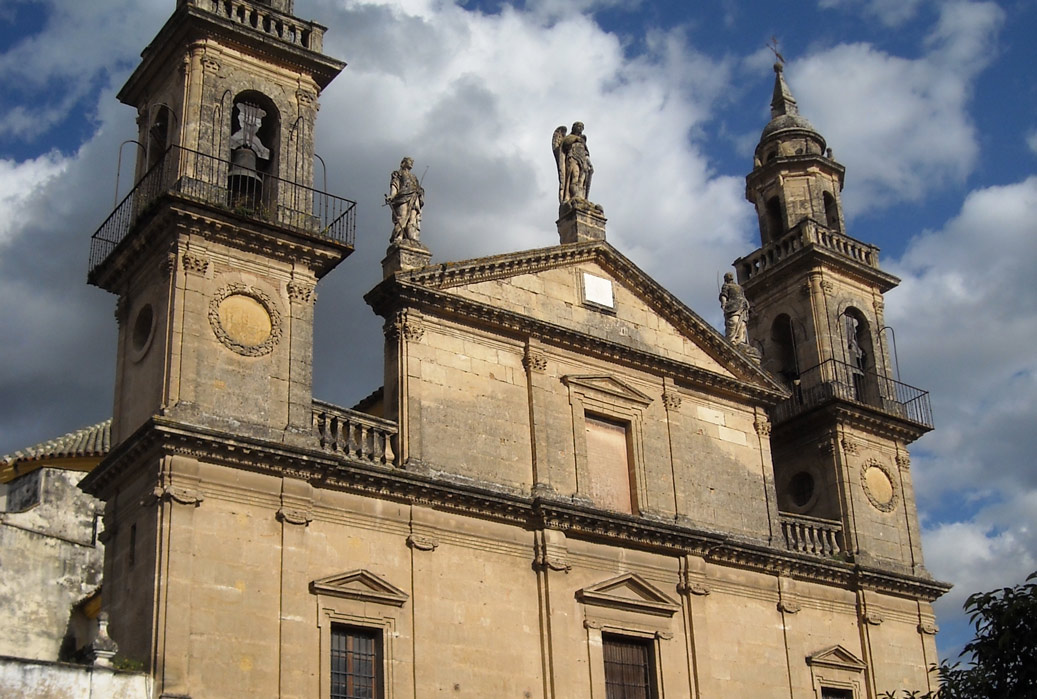
Going down Roelas street, travelers will come across the Church of San Lorenzo (3), founded on an old mosque that replaced an older Visigothic church. Its floor plan is rectangular with three naves, without transept and apse-shaped chevet. It has a porch with three openings pointed at the main portal and a solid Arab minaret converted into a Renaissance tower.

Returning to the Palace of Viana and going up the street of Sta. Isabel, towards the north we will find the Church of Santa Marina (4). In front of it lies the homonymous Plaza de Santa Marina, chaired by the Manolete Monument. It has a rectangular plan and is divided into three naves, the main being notably higher than the lateral ones.
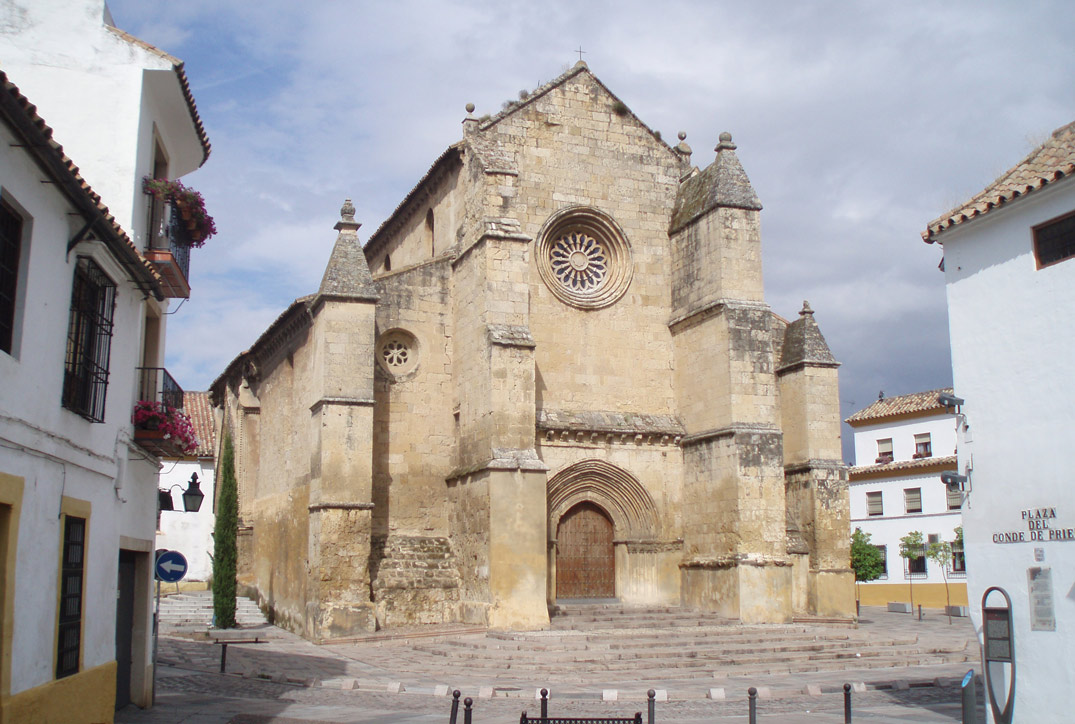
- Gardens of Vallellano
Direction: Of. Count of Vallellano, s/n, 14004 Córdoba
Schedule: opened 24 hours - St. Peter's Church
Direction: St. Peter's Square, s/n, 14002 Córdoba
Phone: 957 47 65 64 - Axerquía
- Jardines de Orive
Direction: Huerto de San Pablo Street, 5, 14002 Córdoba
Schedule: Monday to Sunday from 7:00 a 23:00 h - San Lorenzo neighborhood
- Garden of the Poets
Direction: Domingo Banos Street “Domingon”, 13, 14001 Córdoba
Schedule: opened 24 hours - Gardens of La Merced
Direction: Colon Square, s/n, 14001 Córdoba
Schedule: aopen 24 hours - Gardens of Agriculture
Direction: Of. of the Mozarabs, 3, 14011 Córdoba
Schedule: opened 24 hours
On the last day of the trip, tourists will revisit the historic center of Córdoba following a journey that will take them through all the iconic neighborhoods of the city.
The tour will start in the San Basilio neighborhood, behind the walls of the Alcázar de los Reyes Cristianos. Travelers will cross Calle San Basilio to the north and come through the alleys to the Gardens of Vallellano (1), in the old Huerta del Rey.
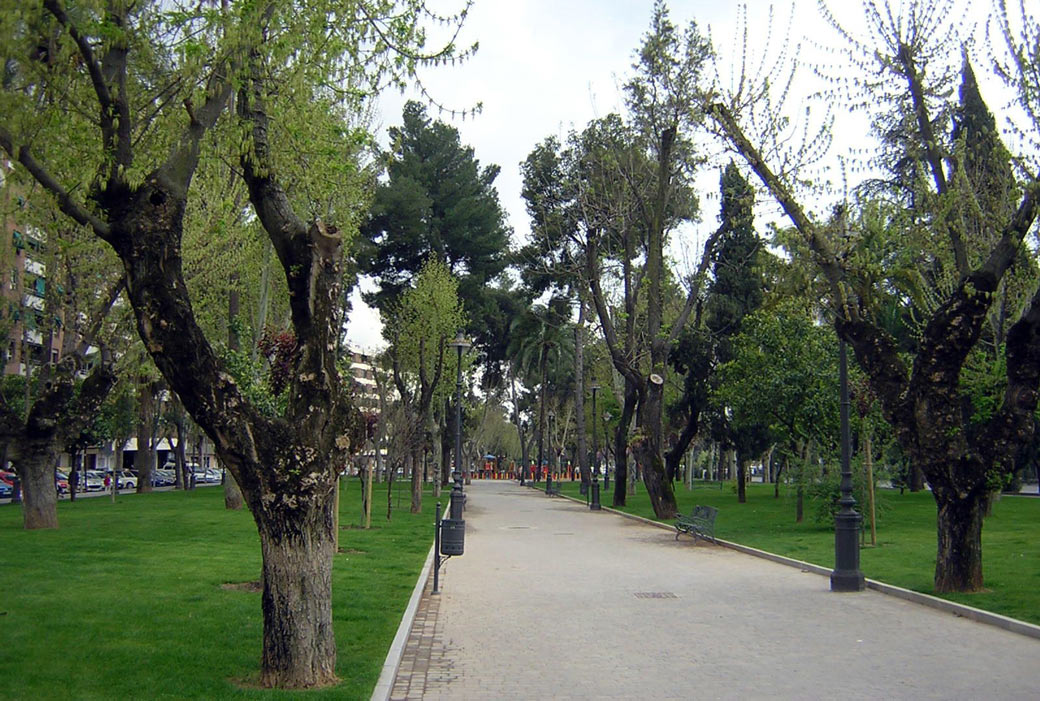
Bordering the gardens heading north you will access the Jewish quarter, and then they will head east across the Jewish streets, Romero and Cardenal Herrero. Here you will be able to greet the imposing Mosque again. They will continue on Martínez Rücker street, approaching the banks of the Guadalquivir.
Through Lineros street and Rodrigo street, travelers will come across the San Pedro neighborhood and its Homonymous church (2), one of the Fernandine churches located in Córdoba. Walking through this neighborhood you will discover the call Axerquía (3) or lower city, a place where centuries ago most of the commerce and industry was concentrated.
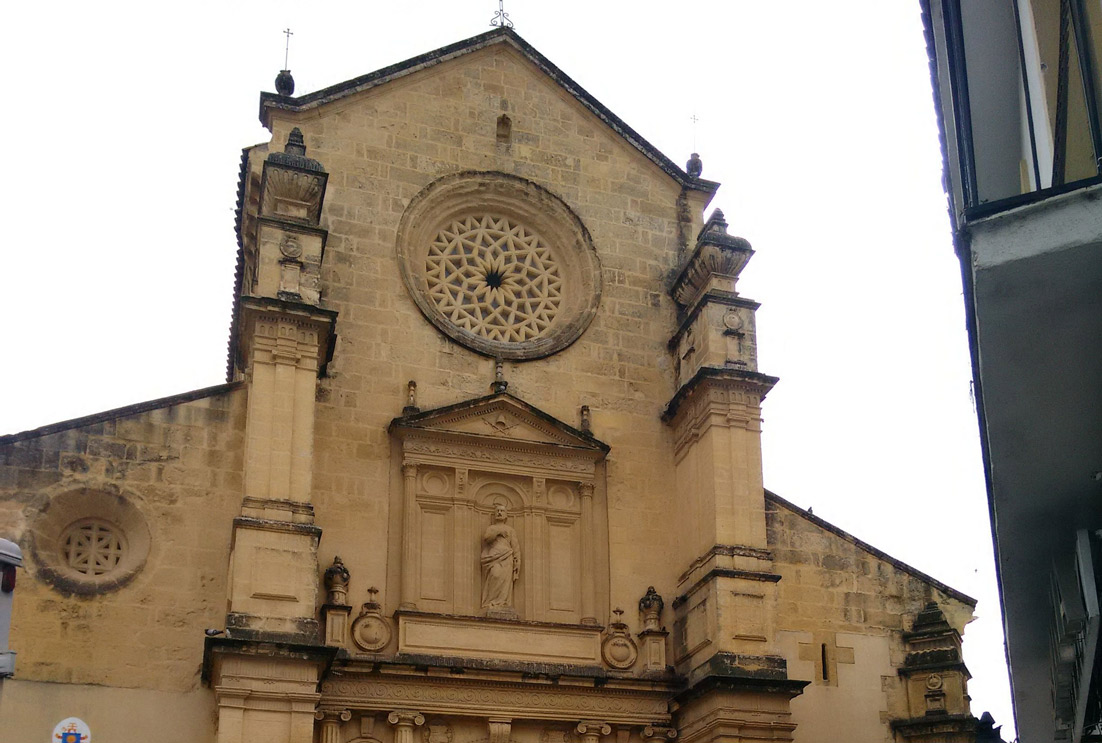
Towards the north the Jardines de Orive (4), an urban park created from different orchards belonging to the Palacio de los Villalones: an old Renaissance palace that is the current headquarters of the Department of Culture of the Córdoba City Council. In the gardens, open to the public, there are archaeological remains of the Roman circus and of a set of houses from the Almohad period.

A) Yes, Letting go, tourists will come back to the Viana Palace area. We recommend getting lost in the San Lorenzo neighborhood (5) and get to the Garden of the Poets (6), a charming corner that time is beautifying as its varied grove grows.
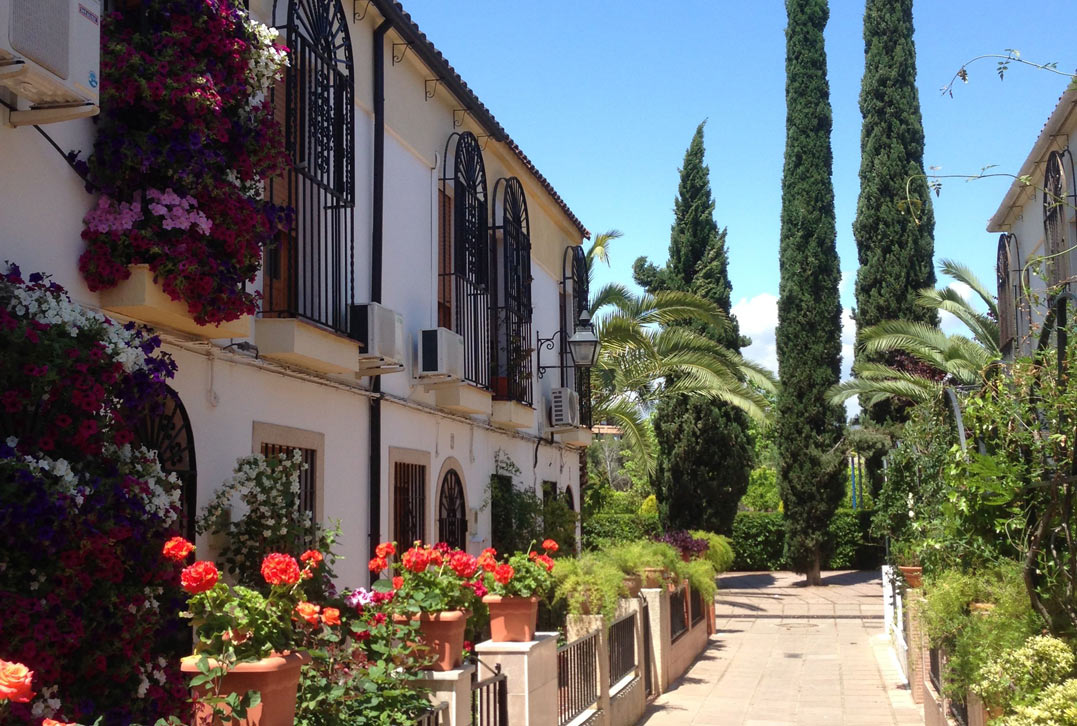
And back, Travelers can go following the Paseo de Córdoba and visit the Gardens of La Merced (7), an oasis within the busy center of Córdoba. It is surrounded by immense and modern buildings of six and seven floors contrasting with the medieval Torre de la Malmuerta or the old Mercedario Convent of the city, which today is the seat of the Provincial Council of Córdoba. In the center is the circular fountain of the famous architect Carlos Sáenz de Santamaría, surrounded by gigantic trees whose roots, legend says, They are fed by the ashes of ancient Roman patricians buried there.

Our last recommended stop is at Gardens of Agriculture (8), which can be reached by going down Ronda de los Tejares avenue. It is a large garden with a radial space that converges in squares decorated with wrought-iron benches, tile and dovecotes. It has two ponds and several sculptures dedicated to painters, poets or sculptors.
Once you have explored this green space, taking a pleasant walk to the south along the Paseo de la Victoria we will return to the point where we started the day.
